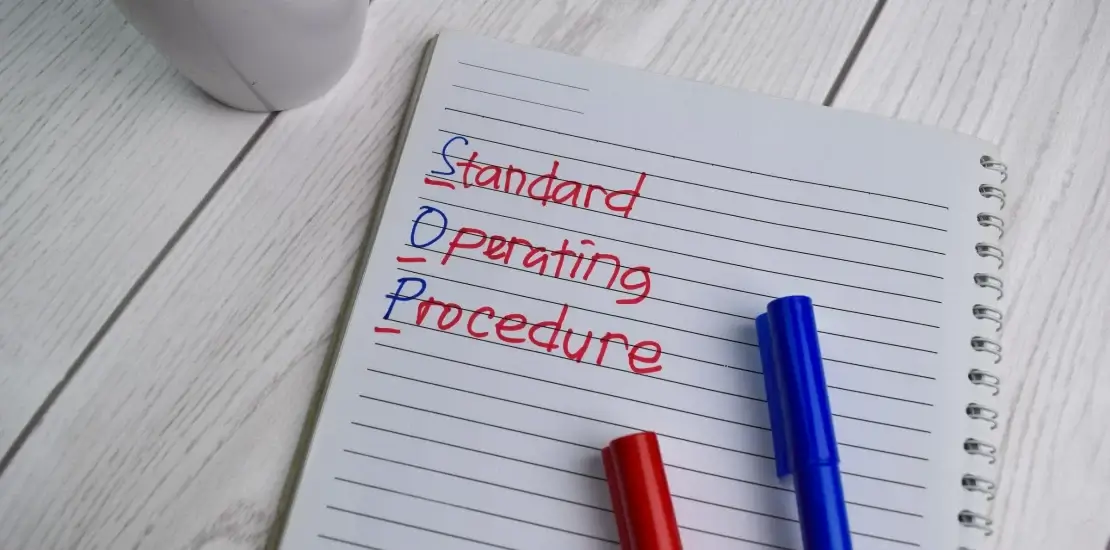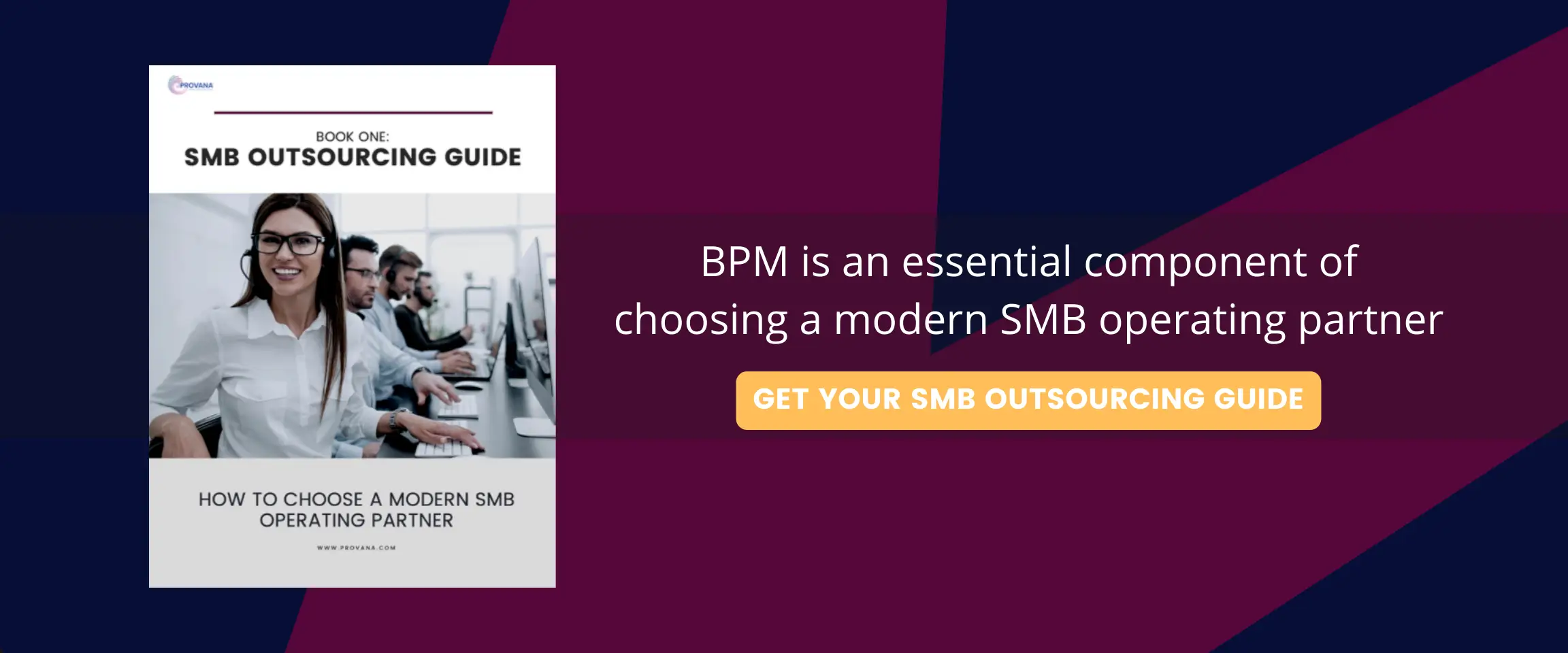5 Key SOP-Focused Questions to Ask a Potential BPM Partner
- November 26, 2021
- Category: Business process management

If you are a growing collection business, you may eventually have to augment your staffing capacity to keep up with surging demand and client promises. If outsourcing is on your mind to get the right skills, you may either want to outsource to a Business Process Outsourcing (BPO) or look for a service provider that can hire, train and manage the talent, using Business Process Management (BPM) outsourcing model. Today more and more businesses are choosing BPM over BPO for their level of sophistication and hassle-free operations. However, just choosing the BPM outsourcing model isn’t enough to augment your staffing capacity the right way. You still need to assess a potential BPM service provider on their Production Management, Transition Management, Compliance and Performance, Resource Management, Standard Operating Procedure (SOPs), and KPIs practices to avoid the loss of productivity, disconnected workflows, and unexpected data breaches.
There are several key elements that you need to be in place to ensure smooth BPM operations. One of these elements is the nature of SOPs being used by the provider to ensure quality, repeatability, and resource flexibility. The SOP, basically a set of instructions for each element of a business process, should ideally be documented in such a way that they leave no ambiguity about process execution and management.
Given SOPs are subjective yet very detail-oriented sets of documents, you need your service provider to maintain a degree of discipline, rigor, and standardization to draft them carefully for you or with you. Here asking some important SOP questions can help you gain deeper insight into the way the provider manages their operation and to gauge how robust that operation will be. Some of the questions to ask about SOPs are:
How many SOPs would our business likely have?
SOPs are important to making internal processes run smoothly. They save time, help familiarize new employees with the provider’s processes, and keep experienced employees up-to-speed when processes change. Ideally, a BPM provider should have comprehensive individual SOPs around:
- Software and Technology to help agents quickly pick up on the new tool without having to wait on someone else to assist them in navigating the collection software or tool.
- Quality Management to help agents know if they’re meeting the expectations.
- Training and Coaching to help agents stay updated on the developments in the debt collections industry and call compliance to FDCPA.
- Feedback to clarify when to involve agents in decision-making processes.
- Human Resources to set down minimum qualifications and skills a new employee should possess to work for the provider.
- Instructions to include proper instructions on how to proceed with every consumer call and situation.
- Basic Telephone Etiquette to help agents to use the right tone and communication techniques while interacting with a consumer for debt repayment.
What are the elements included in a typical SOP?
SOPs, in their purest form, support the right people in the right environment. The most widely seen SOP formats include step-by-step documents, workflow diagrams, organizational charts, detailed instructions, and checklists. So, when you get the sample SOP from the provider, make sure it includes all the key elements mentioned below in bold.
SOPs should always begin with a title that briefly but fully encapsulates the purpose of the document. Identification near the top of the document should include any relevant ID numbers, department names, and necessary signatures. Each SOP should also include purpose to give a brief summary of what the SOP aims to explain and include definitions of jargon that the reader should know before they begin. The format of the procedure section will vary depending on the complexity of the process. For simpler step-by-step processes, a numbered list works the best. If the SOP involves many decisions from different stakeholders, a flowchart is likely a more suitable format.
What kinds of metrics does the SOP enable for production management?
The SOP manual for production management should lay down the guidelines for the agents, as well as other resources aligned with those agents such as portfolio manager, account manager, etc. It should address everything from hiring to leaves and performance reviews to termination of jobs. This way, the employee-on-hire will know what they’re supposed to do, avoiding confusion.
Adding the required performance standards in SOPs always helps agents know if they’re meeting the expectations. Typically, it is best to check for below mentioned KPIs to track agent performance.
- Average call abandonment rate
- Average handle time
- CSAT (Customer satisfaction score)
- Average time in queue
- Average hold time (AHT)
What are the other purposes the SOPs will be used for?
Other than tackling obvious BPM pain points, SOPs can also help the service provider:
- Maintain service quality by utilizing metrics and KPIs for quality assurance.
- Instruct for unusual circumstances by mentioning tips on risk mitigation other than obvious step-by-step procedures of each process.
- Ensure increased safety by clearly warning employees about malware, helping them secure sensitive customer data.
Can you share some sample SOPs with us from other clients?
If you’re in a large company, check if SOP samples provided by the provider are in a guide or report format. The ideal approach to a report is to include a cover page with the title and all the relevant reference details, followed by a list of chapters, before embarking on the processes themselves.
Well-written SOPs have steps that are short and simple and are usually presented in a clearly labeled document. To make sure sample SOPs are not high-level, check if they:
- Prepare the scope of each procedure
- Use a consistent style
- Use correct notation, if applicable
- Work out all the necessary steps of the process
- Try to assess potential problems in the process
- Determine metrics against which the SOPs can be judged
- Test the process
- Clarify the method of optimizing the process
- Run a risk assessment on a process
SOPs that present information with visual aids are usually the best. Flow diagrams provide employees with a visual way of understanding what is being asked of them without comprising on attention to detail.








